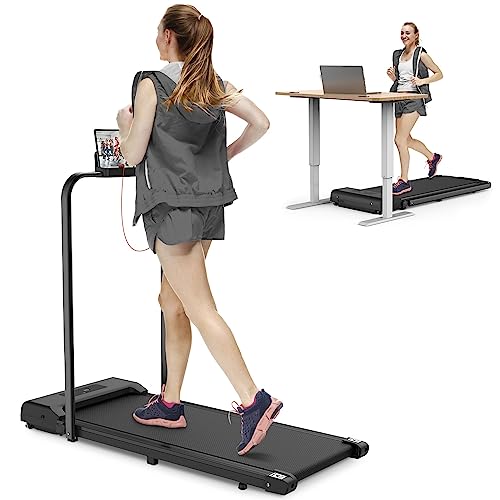
Treadmill For Home
Add a review FollowOverview
-
Founded Date March 13, 1910
-
Sectors অটোমোবাইল ইঞ্জিনিয়ার
-
Posted Jobs 0
-
Viewed 60
Company Description
10 Ways To Create Your Walking Machine Empire
The Walking Machine: A Comprehensive Guide to Your Fitness Companion
In today’s fast-paced world, where time is a luxury, maintaining a constant exercise regimen can be a difficulty. For lots of, a walking machine– frequently known as a treadmill– works as an ideal physical fitness buddy. This short article provides an in-depth take a look at walking machines, including their benefits, types, maintenance suggestions, and often asked concerns.
Why Choose a Walking Machine?
Walking machines provide a practical and effective way to include cardiovascular exercise into every day life. Here are several key benefits:

- Convenience: Walking machines permit people to work out anytime, despite weather conditions or time constraints. They are perfect for busy schedules.
- Flexibility: Users can walk, jog, or run at their own rate and intensity.
- Security: Walking machines present a lower danger of injury compared to outdoor walking or running, particularly for beginners or those recuperating from injuries.
- Tracking Progress: Many treadmills included integrated monitors that track metrics like speed, range, and calories burned.
Types of Walking Machines
When considering a walking machine, it’s vital to select the ideal type based upon private physical fitness goals and space restraints. Below are the primary kinds of walking machines:
| Type | Description |
|---|---|
| Handbook Treadmills Electric | These machines do not have a motor, and users need to stroll or run to rotate the belt. |
| Electric Treadmills | Powered by an electric motor, enabling users to set the speed and slope effortlessly. |
| Folding Treadmills | Created for simple storage, these treadmills can be folded up when not in usage. |
| Desk Treadmills | Suitable for a double work and exercise environment, these compact machines permit walking while working. |
| Incline Trainers | These permit users to mimic uphill walking, enhancing workout strength and calorie burn. |
Picking the Right Walking Machine
Picking the ideal walking machine can significantly affect motivation and effectiveness. Here are some elements to consider:
Key Features to Look For
- Motor Power: An effective motor guarantees a smooth and consistent workout. For periodic walkers, a 1.5 HP motor is generally enough; for much heavier usage, look for 3.0 HP and above.
- Belt Size: A broader and longer belt supplies more area for a comfortable stride. Requirement sizes vary from 16 inches large and 50 inches long.
- Slope Options: Adjustable incline settings can mimic walking or running uphill, increasing the intensity of the workout.
- Shock Absorption: Good shock absorption decreases the threat of joint injuries and improves convenience.
- Console Features: Look for integrated exercises, heart rate screens, and connection features like Bluetooth for a more interesting experience.
Budget Considerations
Walking machines come in a vast array of prices, depending upon features and building quality. Here’s a rough spending plan breakdown:
| Price Range | Functions |
|---|---|
| Under ₤ 300 | Basic handbook or small electric treadmills with limited features. |
| ₤ 300 – ₤ 700 | More advanced electric treadmills with incline, medium power motors, and better guarantees. |
| ₤ 700 – ₤ 1500 | Top quality electric treadmills with bigger integrated display screens, substantial features, and guarantees. |
| ₤ 1500 and above | High-end designs using advanced technology, functions, and resilient construction for severe fitness lovers. |
Upkeep Tips for Your Walking Machine
To guarantee longevity and optimum performance of a walking machine, consider the following maintenance tips:
- Regular Cleaning: Dust and sweat can collect on the machine and the belt. Clean down the surfaces and tidy the belt regularly.
- Lubrication: Depending on the model, lubricating the running belt occasionally can avoid wear and tear. Examine the maker standards for advised lubrication schedules.
- Inspection: Periodically inspect the machine for loose screws or used parts. Tighten up and change as needed.
- Calibration: Occasionally, check the calibration of your machine’s metrics to ensure they supply accurate information.
- Proper Use: Follow the maker’s suggestions for weight limits and operational guidelines.
Frequently Asked Questions About Walking Machines
1. Are walking machines an excellent exercise?
Yes, walking machines provide an excellent cardiovascular workout, can assist with weight reduction, and enhance total health.
2. How frequently should I utilize a walking machine?
Aim for a minimum of 150 minutes of moderate-intensity aerobic activity weekly, which can easily be attained with routine sessions on a walking machine.
3. Can I drop weight on a walking machine?
Yes, incorporating a walking machine routine into a healthy diet plan can promote weight-loss, specifically if integrated with periods and incline training.
4. Is it safe for senior citizens to utilize a walking machine?
Yes, walking machines can be safe for elders with low-impact settings and safety functions like hand rails. Nevertheless, individuals should seek advice from their health care supplier before starting any workout program.
5. What’s the distinction between a treadmill and a walking machine?
The term “walking machine” usually refers to a treadmill planned for walking, while “treadmill” can refer to machines used for different strengths, including running.
With their versatility and benefit, walking machines can substantially enhance one’s fitness journey. By thoroughly choosing the best type, guaranteeing appropriate upkeep, and including different exercise techniques, users can maximize their walking machine’s advantages. Similar to any workout program, consistency is key to achieving enduring physical fitness outcomes.


